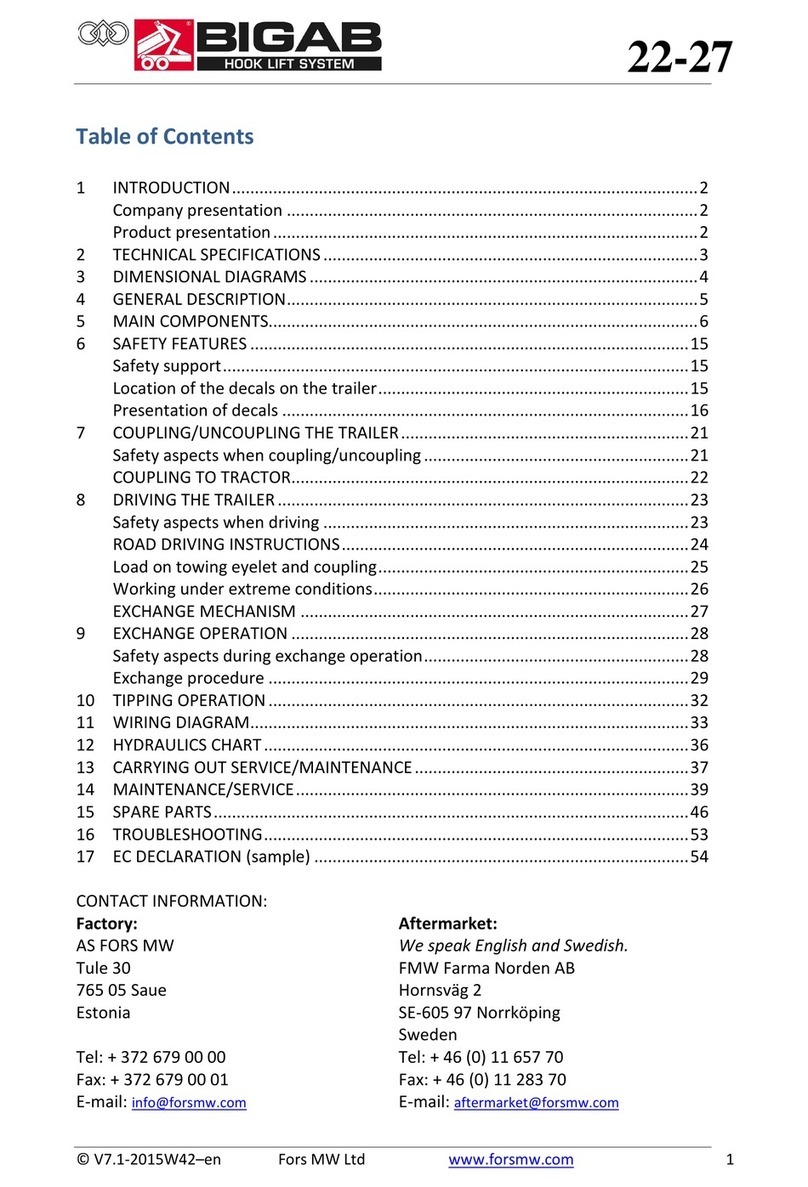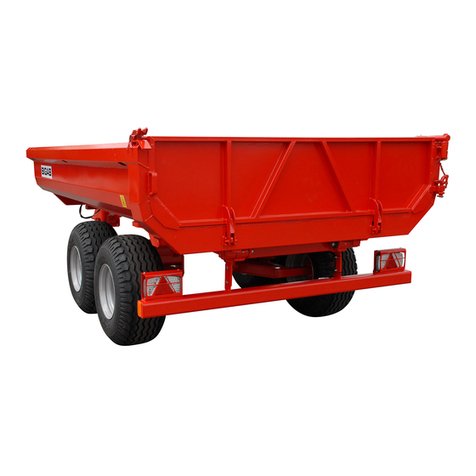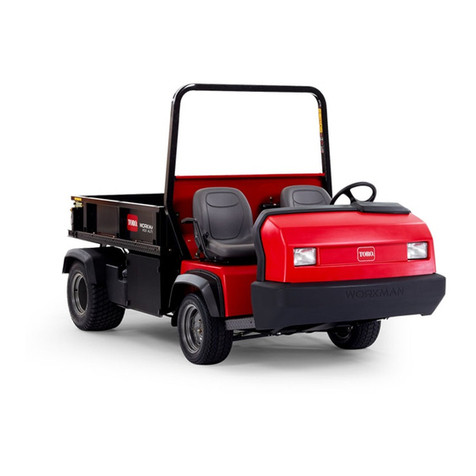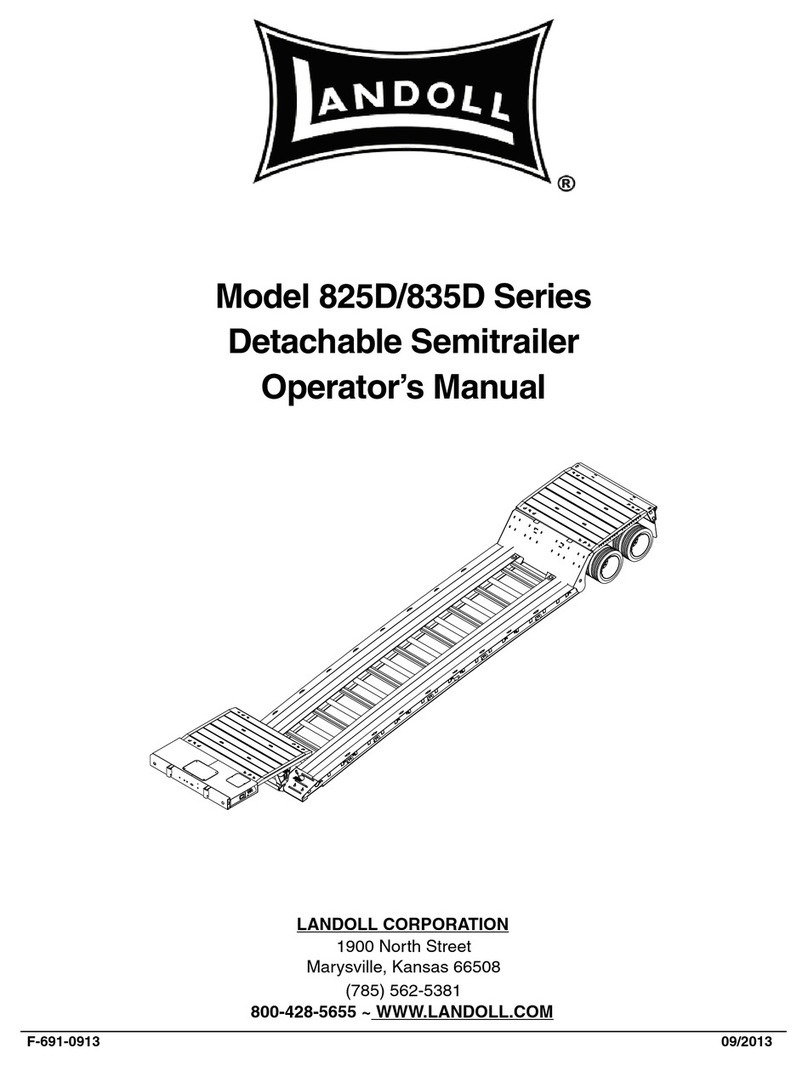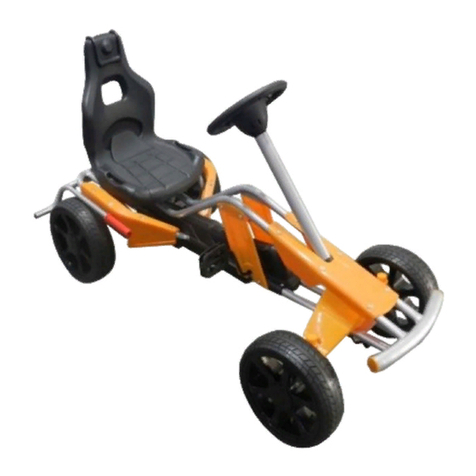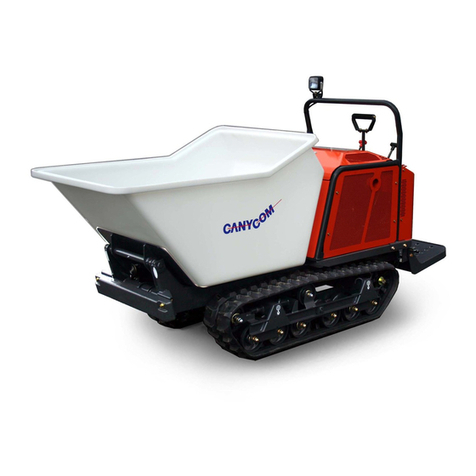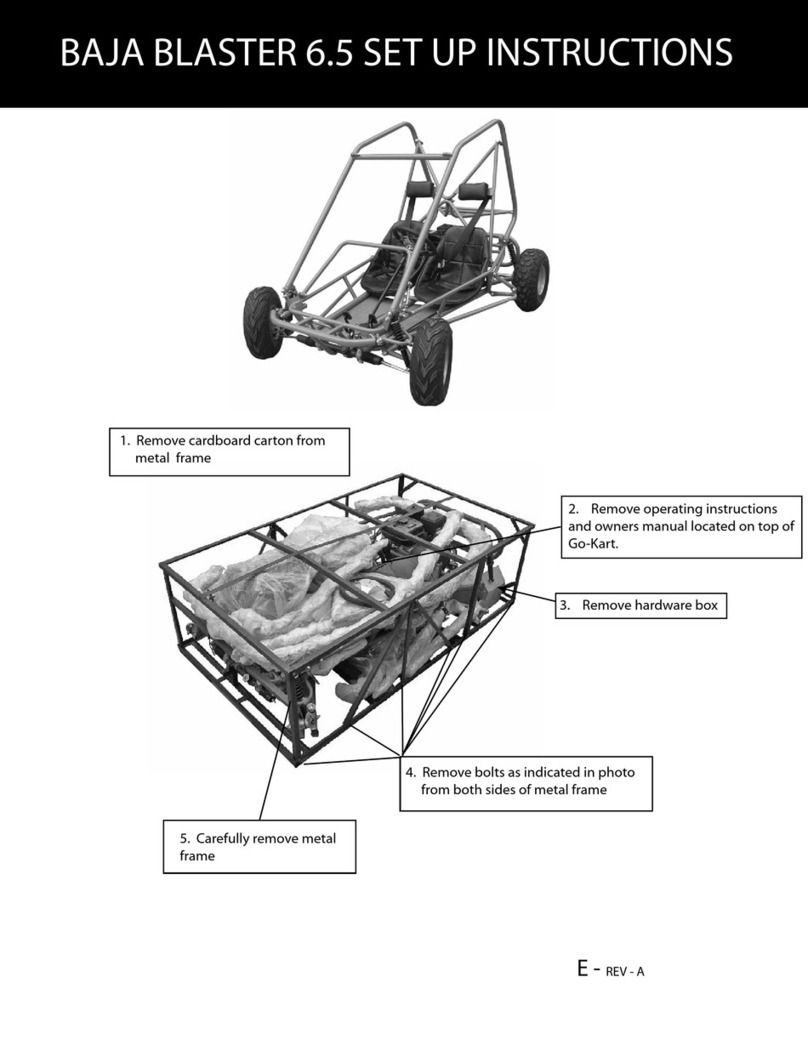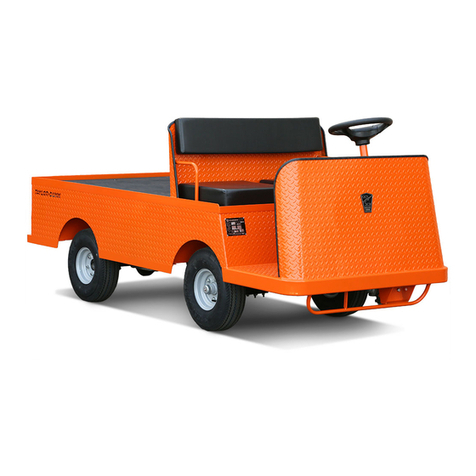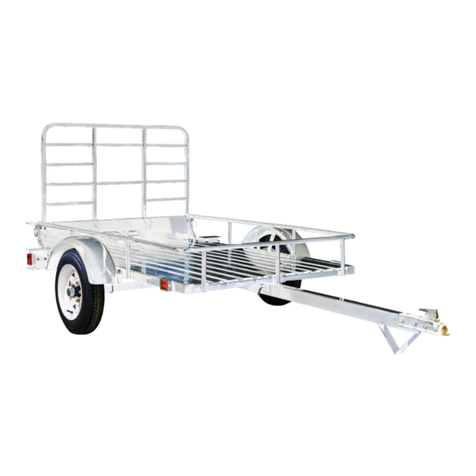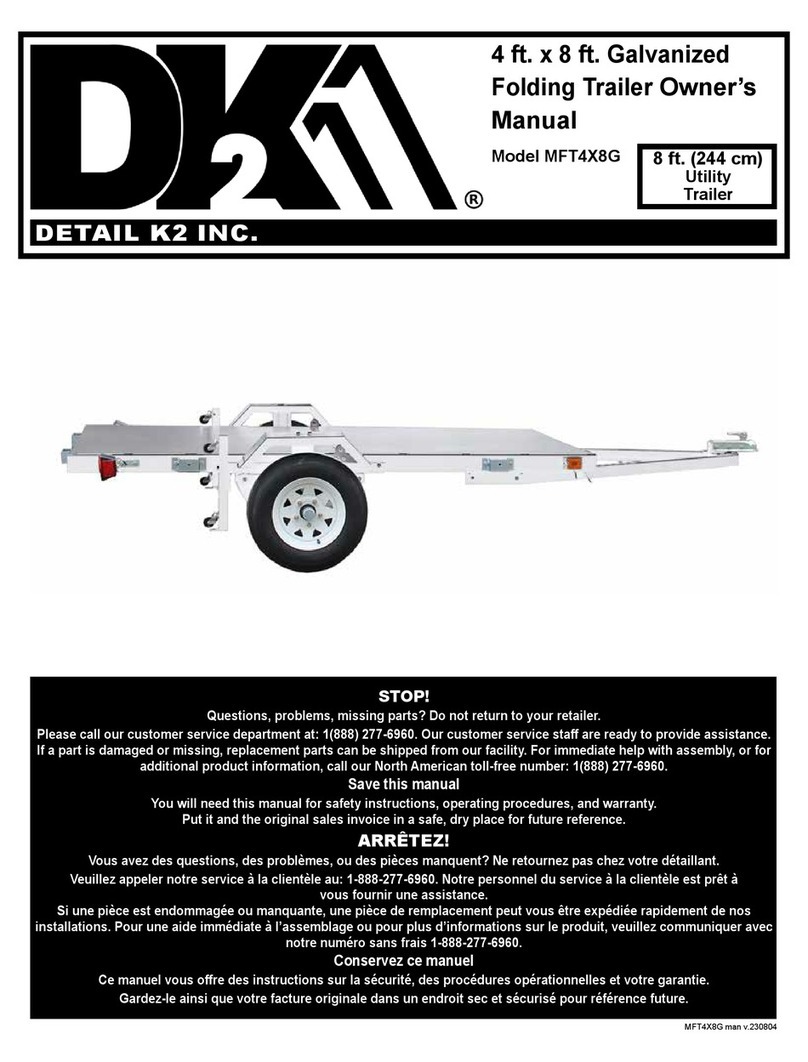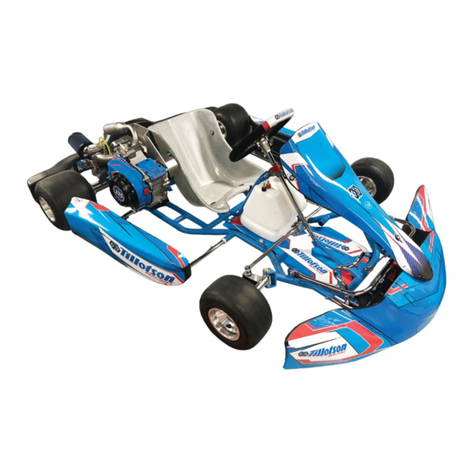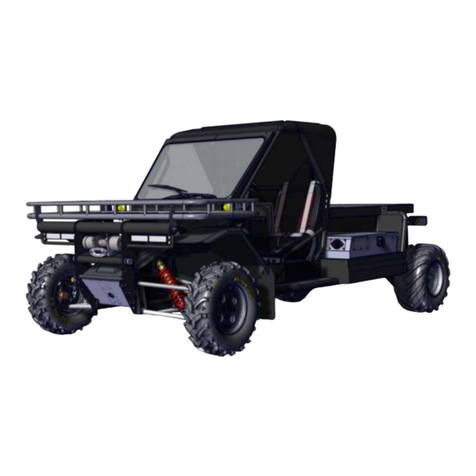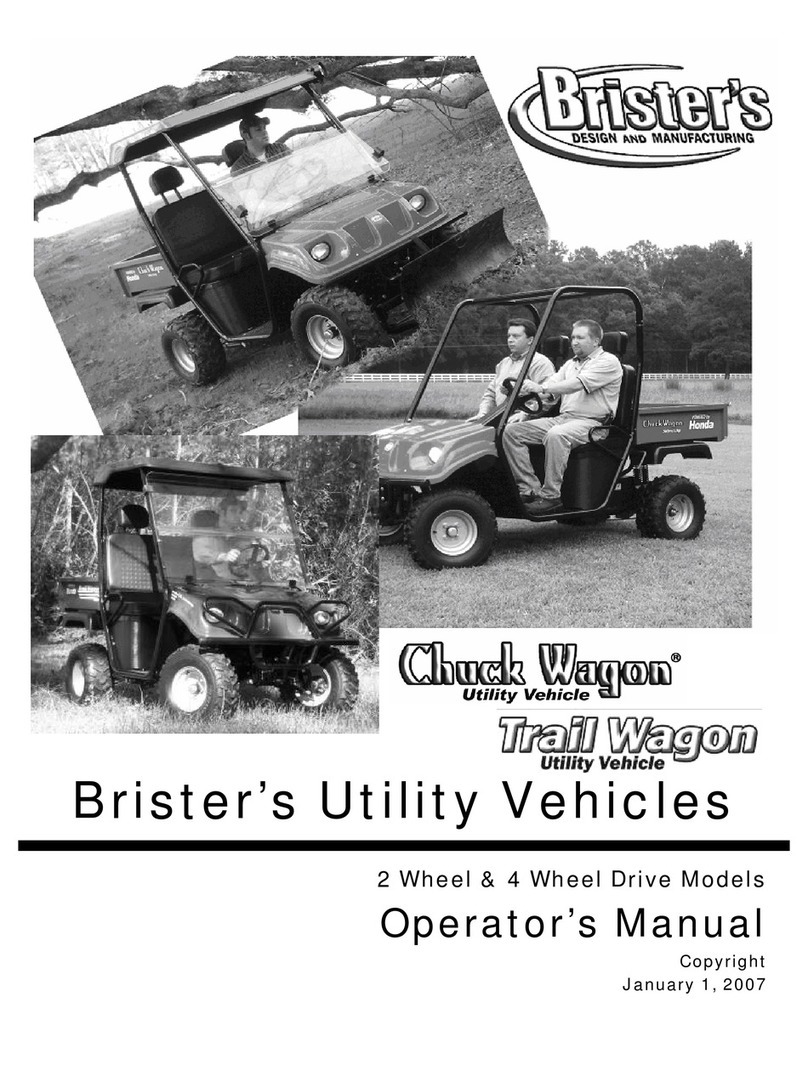Bigab 7-10 User manual

v1.2 - 2021 - EN
Original Instruction
www.forsmw.com
Instruction manual

G G
2© 2021 FORS MW Ltd
TABLE OF CONTENTS
IDENTIFICATION OF MACHINE.........................................................................................................................2
INTRODUCTION.....................................................................................................................................................3
SAFETY REGULATIONS........................................................................................................................................4
GENERAL SAFETY INFORMATION........................................................................................................4
SAFETY MESSAGES...................................................................................................................................4
LOCATION OF THE LABELS ON THE PRODUCT ...............................................................................5
OPERATION.............................................................................................................................................................8
CONTROLS AND DISPLAYS ....................................................................................................................8
UNLOADING TRAILER...............................................................................................................................8
BEFORE OPERATION.................................................................................................................................9
CONNECTING MACHINE .......................................................................................................................10
WORKING IN EXTREME CONDITIONS...............................................................................................14
DISCONNECTING THE TRAILER...........................................................................................................15
CLEARING BLOCKAGES AND CLEANING.........................................................................................15
TRANSPORT...............................................................................................................................................15
MAINTENANCE.........................................................................................................................................16
DAILY/MONTHLY/YEARLY MAINTENANCE PROCEDURES AND INSPECTION.....................17
MAINTENANCE MATERIALS .................................................................................................................21
TIGHTENING TORQUES..........................................................................................................................22
LUBRICATION SCHEDULE .....................................................................................................................23
STORAGE ....................................................................................................................................................24
CLEANING..................................................................................................................................................24
TROUBLESHOOTING ..............................................................................................................................24
TECHNICAL INFORMATION .............................................................................................................................26
DESIGN OF THE PRODUCT...................................................................................................................26
TECHNICAL DATA ....................................................................................................................................29
DIMENSIONAL DRAWING.....................................................................................................................33
ELECTRICAL AND HYDRAULICAL SYSTEM......................................................................................34
ADDITIONAL INFORMATION...........................................................................................................................43
CONFORMITY OF STANDARDS...........................................................................................................43
WARRANTY................................................................................................................................................43
DISMANTLING AND SCRAPPING........................................................................................................43
PART LIST....................................................................................................................................................43

G G
www.forsmw.com 3
IDENTIFICATION OF MACHINE
This instruction manual applies to the BIGAB hooklift trailers -, -, -, -, - G, - G and
- and contains information for its safe use.
The trailer’s serial number is located on the identification plate and also stamped onto the frame.
The EC declaration of conformity shall always be submitted with this manual which certifies that the
produced vehicle conforms to the requirements established with directive //EC and indicating
serial number of the machine.

G G
4© 2021 FORS MW Ltd
INTRODUCTION
This Manual gives the owner/operator information about maintaining and servicing the BIGAB hook-
lift trailer and provides instruction for safe and proper use of the machine.
Even if you have experience of this type of product, we ask that you read and understand the contents
of this manual completely and become familiar with your new machine before operating it. This Man-
ual contains information that could be vital for safety and eciency, as well as to ensure the validity of
the factory warranty.
If you have questions concerning information or availability of manuals in other languages, contact
your dealer.
Throughout this manual, information is provided by the sign - read carefully and comply with
these messages – it will improve your operating and maintenance eciency, help avoid breakdowns
and damage, and extend your machine’s life.
Message NOTE! indicates that the product, process or environment may cause damage, as well as
indicating the risk of minor injuries. These markings are used to draw the attention of readers to the
fact that this is an area of particular importance.
Do not use this machine for any applications or purposes other than those described in this manual or
applicable for approved attachments. If the machine is to be used with special attachments or equip-
ment other than those approved by Fors MW, consult your dealer. Any person using unapproved at-
tachments or making unauthorized modications is responsible for the consequences.
The dealers are ready to provide you with any assistance you may require, including providing genu-
ine service parts. All service parts should be obtained from your dealer. Provide complete information
about the part and include the model and serial numbers of your machine.
Please be aware that Fors MW continuously improves its products and reserves the right to make
changes and improvements in the design, construction and also in instructions of any part without
obligation to install such changes on any unit previously delivered.
Fors MW conforms to ISO for safety marking in accordance with the directive //EC.
Manufacturer: Dealer:
AS FORS MW
TULE
SAUE
Tel: +
www.forsmw.com

G G
www.forsmw.com 5
SAFETY REGULATIONS
GENERAL SAFETY INFORMATION
Carefully read through the user manual before using the hook lift
trailer. Important data relating to your particular trailer can be
found in the trailer’s technical data. Incorrect usage can result in
injuries to you and damage to the trailer.
Operating a trailer requires a high level of expertise, as well as knowledge about the machine you are
using. It is important for you to train with regard to the trailer’s behaviour. Practice the movement
pattern and always work with smaller loads until you are completely familiar with operating the trailer.
BIGAB Hooklift is intended for use in agricultural, construction and community work for collection and
transportation of waste, scrap, agriculture and other goods.
Bigab Hooklift is not intended for use in transporting people or animals.
Take care to ensure that nobody is within the safety zone 20m.
The recommended ambient working temperature for this machine is -30°C to +40°C.
SAFETY MESSAGES
• Read carefully and understand the user manual before using the device. Consult the user
manual to solve your problems.
• Follow instructions to avoid the risk of accidents. The manufacturer and dealer are not
responsible for any damage in the event of failure to comply with these instructions.
• It is prohibited for unauthorised parties to be within the trailer’s risk zone, which is 20 m! The
user must have full visual control over the working area. Always maintain a visual check on the
work area. Never stand or walk under suspended loads.
• It is important for you to adapt your speed to the driving situation. Drive carefully on sideways
inclines. The same applies on slopes.
• Never drive under obstacles such as bridges, electrical cables, etc with the container bridge
raised.
• Risk of overturning. Ensure that the trailer is always standing on rm ground. Never overload
the trailer.
• Stop working by switching o the engine, engage the parking brake and remove the ignition
key to prevent unauthorised usage.
• Carefully read through the warning information on the oil and grease products you are
using, and follow their instructions accurately! During service works wear correct protective

G G
6© 2021 FORS MW Ltd
equipment and seek medical attention immediately if eyes or skin are exposed. It is prohibited
to release oil onto the ground or into watercourses.
• If repairs or modications require welding work, you must rst contact your dealer, who will
provide you with the necessary welding instructions. Incorrect welding or inexperience during
welding can result in sudden breaks in the structure.
• During loading and transport on public roads follow the applicable trac legislation.
LOCATION OF THE LABELS ON THE PRODUCT
The BIGAB hooklift trailer is equipped with a range of signs and labels relating to both safety and
information of the machine. Check that all the labels are in the correct positions and visible. If signs or
labels peel o or get damaged, they must be replaced. For replacement labels contact your dealer for
a new set and guidance for positioning.
Location of the labels on the product
Label set
Warning and instruction manual
Carefully read and comply with the instruction manual and work
instructions. Read the instruction manual carefully before starting
to use the trailer. Ignoring this can be potentially dangerous.
Total weight
It is absolutely prohibited to load more than the amount your model
of trailer is designed to handle. This will be dangerous for you and
your surroundings. Please check trailer specic total weight from
the ID-plate.

G G
www.forsmw.com 7
Hazardous movement
It is a hazardous movement if the rear end of the tractor lifts.
Note! This warning label is included in the delivery of your trailer.
It must be attached in a clearly visible location in the tractor cab.
If you would like more of these labels, they are available to order,
free of charge, from our after sales department. Contact details are
visible in the rst chapter.
Risk of injury
It is absolutely forbidden to board the trailer when it is moving
Anyone doing so may be at risk of serious or fatal injury.
Hazardous area
Standing between the trailer and the towing vehicle when the
trailer is being driven, moved with frame steering or when other
functions are activated between the trailer and towing vehicle, can
be potentially fatal. As the driver, you must always ensure that no
one is in the area around the machinery.
Risk of slipping
There is a risk of slipping as the surfaces of the trailer can be
slippery due to combination of oil/mud/rain on the surface. The
ground around the trailer can also become slippery, as the tires
can tear up the surface and expose mud and soil.
Hydraulic uid under pressure
Hot hydraulic uid at high pressure levels can occur in the
hydraulic system. Take care when connecting, disconnecting and
replacing hoses.
Maximum load to coupling device
Ensure that you do not load in such a way that the load on the
towing eye exceeds the permitted values.
NB! Check your permitted towing eye vertical load value from
technical data and marked for the towing eye. The load is largely
determined by the way the weight is distributed on the container
bridge, and it is the user´s responsibility to ensure that this is not
exceeded.

G G
8© 2021 FORS MW Ltd
Risk of crushing injuries
There is a risk of clamping or crushing injuries during work and
maintenance. Do not place your hands to the machine or any
other moving part.
Use the security post during all service operations
It is absolutely forbidden to lean under a raised frame unless it is
secured with the security post. Under no circumstances may the
trailer be carrying either a load or a container when using the
security post.
Labels for the use of safety equipment
Use appropriate safety equipment in order to avoid injury when
using the trailer.
Lubrication
This label used to show the importance of regular lubrication of
the trailer. Lubrication points and schedule can be found in the
chapter on lubricaton.
Tire inspection
The tire bolts must be tightened and the brakes must be inspected
and adjusted regularly.
Wheel bolts tightening
This label indicates wheel bolts/nuts tightening torque.
Exchange unit
The exchange unit may not be operated unless the frame is folded
down. During transport with the trailer, the hook must be folded
down in the parking position.
Tipping
Lever must be pushed correctly to the extreme position, otherwise
it might damage the trailer.

G G
www.forsmw.com 9
BIGAB hook trailer ID plate
ID plate contains trailer specic technical data. This plate can be
country specic.
RUP type approval plate
If your trailer is equipped with type approved RUP, it is labelled with
type approval plate that contains RUP specic type approval data.
OPERATION
CONTROLS AND DISPLAYS
The BIGAB hooklift trailer is only intended to be used and operated from the tractors’driver seat
through the tractor hydraulic lever. Always adapt your operations to your level of experience, current
load and road conditions. Do not exceed the trailers maximum travel speed and maximum loading
values.
NOTE: If damage should occur during use, the work must be stopped immediately.The fault should
be identied and eliminated before starting to use the trailer again.
NOTE: It is recommended to place load symmetrically. Always be sure that the container is rmly
xed before driving. Long containers need enough working space and turning area. Never make sharp
turns at a high travel speed.
Don’t forget to lift the parking leg up before driving.
UNLOADING THE TRAILER
When unloading (loading) the trailer from the transportation platform the general principles of
workplace rules for health and safety shall be complied. The hooklift trailer is rmly attached to the
transportation platform with straps and chains. Wheels are secured by wedges or other objects without
sharp edges to avoid rolling.
Before starting up, check visually that the trailer is not damaged during transportation. If the trailer
is damaged, inform the company that transported the trailer and the dealer or manufacturer of the
product immediately (follow CMR).

G G
10 © 2021 FORS MW Ltd
• Ensure that you have enough space for unloading the product. Wear personal protective
equipment such as helmet and footwear. Lifting operator must be certied.
• Be careful when unloading and unpacking the trailer: do not damage sensitive components,
do not change factory settings or damage paint or other surface nishes. Be careful when
lifting so that cables, connectors or other components are not damaged for instance
between lift fork and trailer frame.
• Lifting up the trailer from transportation frame. See lifting points below.Weight depends on
the type of trailer (see chapter Technical information);
• Lower the trailer to the ground.
• Usage of the trailer is strictly forbidden if safety devices of the trailer are damaged. For more
detailed information about safety advice see the chapter on Safety Regulations.
Lifting points for (un)loading
BEFORE OPERATION
A pre-operation checklist is provided for the operator for careful examination of trailer to ensure safe
use of the trailer.
Before operating the machine and each time thereafter, the following areas chould be checked:

G G
www.forsmw.com 11
Pre-operation checkpoint OK/
NOK
Check that personal protection equipment is used and isin good condition.
Check and lubricate the machine per the schedule ( see Maintenance Section)
Check that all bolts, nuts and hoses are connected tightly
Check the towing eyelet for defects
Check that the trailer is s securely and appropriately xed to the towing vehicle
Checkconditionofallhydrauliccomponents. Replace if needed
Check that all hydraulic functions are working
Control the lights
Check that brakes are functioning
Verify that the hook is the right height to suit the container
Check if there is enough working space and turning area
Check the condition of the tires and air pressure.
Check that the wheel nuts are tightened.
CONNECTING MACHINE
Note: When connecting and disconnecting the BIGAB, bear in mind the risk of clamping injuries, the
risk of slipping, the tipping risk and the risk of hydraulic high-pressure jets and hot oil. Ensure that
neither the hydraulic pump nor the power take-o is connected.
• Check that the towing eyelets’ lock is undamaged and properly tightened.
• Connect the trailer‘s towing eyelet to the towing vehicle’s tow hook. Ensure that the towing
device is properly locked.
• Connect the frame lock.
• Before driving, parking leg must be lifted up and xed with the pin.
Note:Parking brake is only for parking. Not for use during tipping, hooking or loading.
Brakes
• Connect the hoses to the tractor’s brake outlet.
Travel lights
• Connect the light connector to the tractor’s trailer outlet (12V or 24V).
Hydraulic system connections
• Always check that the quick couplings are clean and that they lock properly.

G G
12 © 2021 FORS MW Ltd
• If trailer is equipped with electronic control system, supply voltage must be observed
according to trailer options.
HANDLING IN ROLL ON - ROLL OFF
Exchange and tipping must be operated from the operator’s seat in the towing
vehicle! If your BIGAB is equipped with suspension there is no bogie blocking.
Ensure that the trailer is straight in
front of the load!
Ensure that the position
selector for exchange or
tipping is in the exchange
position, not in the tipping
position!
On-loading!
• Check that the load carrier is within the discs. Release the brakes on both the towing vehicle
and the trailer to make it easier to roll on the load. Check the position of the tower during on-
loading, so that the container frame does not catch on to the rollers from behind.
• The tower must be completely retracted when rolling on the container bridge in order to increase
lifting force and reduce the strain on the coupling device. Ensure that the container frame does
not catch in the rollers at the back of the trailer. Adjust the tower outwards continually during
exchange in order to move clear past the rollers. If the tower is not adjusted upwards during
on-loading, there is a considerable risk of the exchange’s lock being damaged if the container
frame catches in the rollers.
Stop if the tractor lifts o the ground!
Check that the hook
catches around the loop!
Check that the frame lock
and bogie blocking are
activated!

G G
www.forsmw.com 13
Follow the movement with the extendable tower so that the front
of the hooklift trailer’s frame does not catch on to the rollers.
When you have passed the rollers, always keep the hooklift
trailer’s frame close to the rollers.
O-loading!
Release the brakes on both the towing vehicle and the trailer to make it easier to roll o the load. Check
the position of the tower during o-loading so that the container frame does not catch on the rollers
from above.
• Lock the frame and activate bogie blocking between the towing vehicle and trailer.
• Raise the hook lift frame slightly so that the container bridge does not scratch against the frame
when you slide it backwards
• Then retract the tower backwards so that the locking rails/wings on the container bridge frame
move freely and cannot be damaged.
• Adjust the tower upwards continually so that the container frame does not catch on the rollers
at the back of the trailer during o-loading.
• If the tower is not adjusted during o-loading, there is a considerable risk of the exchange’s lock
being damaged if the container frame catches in the rollers.
HANDLING IN TIPPING
Ensure that the towing vehicle and the trailer are securely coupled
before tipping!
Ensure that the position
selector is in the
tipping position before
commencing tipping!

G G
14 © 2021 FORS MW Ltd
At maximum load, the telescope must be retracted 40 cm (400
mm) in order for the maximum load to be able to be tipped.
Place the hooklift trailer on a at surface.
The sideways incline may not exceed 5 degrees!
At maximum tipping angle – drive slowly forwards until the container is empty. Lower the container
before continuing to drive.
NOTE: Ensure that the container bridge is locked in the correct position before driving.
When tipping, use the brakes to ensure that the machine does
not roll away when the load slides o.
OPERATION WHEN DRIVING
It is the responsibility of the user to ensure that a suciently
powerful and heavy towing vehicle is coupled to the trailer
in all situations. The use of a towing vehicle that is too small
and insuciently powerful can entail risks for the user and the
environment, as well as leading to damage to the vehicle and
trailer

G G
www.forsmw.com 15
Table 1. Example of weight of dierent types of load
Load, kg Kg/m³ Full container 7 m³ 14 m³ 21 m³ 27 m³
Peas, Wheat, water content 15% 800 5.600 kg 11.200 16.800 21.600
Rye, water content 15% 750 5.250 kg 10.500 15.750 20.250
Barley, water content 15% 680 4.760 kg 9.520 14.280 18.360
Oats, water content 15% 560 3.920 kg 7.840 11.760 15.120
Silage, newly harvested 850 5.950 kg 11.900 17.850 22.950
Macadam 1 400 9.800 kg 19.600 29.400 37.800
Gravel 1 550 10.850 kg 21.700 32.550 41.850
Clay 1 800 12.600 kg 25.200 37.800 48.600
Wood chips (50% moisture content) 350 2.450 kg 4.900 7.350 9.450
*The higher the moisture content of the load, the heavier the load, a fact that the user has to take into consideration.
This table is only an approximate estimate of the weights that can occur, and it is the responsibility of the user to ensure
that the vehicle’s limits and the applicable legislation are not being exceeded. The specied values are not exact values,
just examples.
For information purposes and for examples of how the weight of dierent loads may vary, please refer
to the above table. This table should only be viewed as guidance and information. The manufacturer
cannot be held responsible for dimensions or volumes specied in the table, and the table may only be
viewed as a recommendation.
Changing operating function
Figure below shows the lever for manually changing between the operating functions. The lever is
located on the left side of the chassis. This operating function is also available with hydraulic drive.
Changing operating function
NOTE! The bolt needs to be locked within the handles extreme position.
NOTE! It is not allowed to change the changing unit unless the frame is in locked position.

G G
16 © 2021 FORS MW Ltd
WORKING IN EXTREME CONDITIONS
Recommended working temperature range for a Bigab trailer is from –30°C up to +40°C. Note that
working at low temperatures accelerates hydraulic gaskets wear and increases hydraulic hoses exposure
to damages and steel constructions exposure to brittle fracture. When working at lower temperature
than recommended, lift lighter loads than usual.
Before starting to work in cold conditions let the oil circulate freely through the system a few minutes.
Slowly work every hydraulic function through several times so that gaskets become exible before they
receive full pressure.
At exceptionally warm conditions beware of hydraulic oils excessive heating. Too high oil temperature
(above +80°C) degrades the oil and can damage gaskets.
ACTING IN DANGEROUS SITUATIONS
If the trailer comes into contact with high voltage electric wires
comply with the following instructions:
If you are outside the machine
Do not attempt to get into the machine. Keep everybody away from the machines vicinity. Do not touch
any part of the machine.
If you are inside the machine
Get out of it by JUMPING. Avoid touching any conducting parts. Do not make yourself a wire through
which electricity may ow. Get away from the machine by JUMPING so that both feet do not touch
the ground at the same time. The electrical eld of the ground can cause electrocution if both legs are
touching simultaneulsy (closing the circuit). You should be safe 20 meters away but this is of course a
questions of circumstances.
DISCONNECTING THE TRAILER
The oil can be very hot! Do not allow the hydraulic hoses to hang
down to the ground
• Park the trailer on a at, stable surface. Position a parking leg.
• Switch o the tractor’s hydraulic pump and power take-o. Release the remaining hydraulic
pressure.
• Disconnect the hydraulic hoses. Start with the pressure line rst, followed by the return lines
and nally any electrical contacts. Ensure that protective plugs are installed in the hose.
• Finish by disconnecting the trailer’s coupling device from the towing vehicle’s tow hook.

G G
www.forsmw.com 17
CLEARING BLOCKAGES AND CLEANING
• When cleaning, rst perform a rough cleanse using just water. Avoid using high-pressure sprays
on electrical components;
• Use an environmentally friendly detergent. Allow it to work for the specied time. Rinse o with
hot water;
• Always lubricate the BIGAB after cleaning.
TRANSPORT
The hooklift trailer is meant to be transported attached to the tractor at maximum design speed.
• Ensure that none of the additional equipment connected to the trailer can cause accidents
during transport;
• You must always maintain control of the unit in all situations;
• Always check that the LGV sign and reective signs are in the correct locations;
• The permitted transport dimensions, must never be exceeded;
• Before driving, check that no one is in the vicinity of the machine and that your visibility is
unrestricted;
• Bear in mind the height of the machine when driving under yovers;
• Trac rules are there to be followed - comply with the applicable legislation.
NOTE: Observe the specied safety distance to electrical cables when you are in the vicinity of such
cables.
MAINTENANCE
• Make sure that the trailer is standing on a at surface;
• Make sure that the trailer can’t move;
• When lubricating or servicing the trailer, turn o the vehicle engine;
• Be sure that the trailer can’t slip when using support leg, jack or similar equipment;
• Always use the security post in tipping position when servicing. The security post must
always be used when carrying out service work in the tipped position. There must not be
any load on the trailer when carrying out service work in the tipped position (see gures
below);
• Never attempt to do maintenance work on the hydraulic system before you are sure there
is no pressure;
• Do not tighten or repair leaking hydraulic couplings while the system is pressurized;

G G
18 © 2021 FORS MW Ltd
• Never attempt to localize a leakage from hoses or connections by feeling with your hand.
The high-pressure oil jet blaze can penetrate skin and cause serious burns and damages.
High-pressure oil is also highly ammable;
• Avoid getting oil into eyes. Use safety goggles and gloves. If eyes are exposed to oil, ush
them with cool water and immediately contact a doctor.
It is strictly forbidden to lean underneath the container without
using the security post!
Raised container bridge
Use of security post
Security post position
Service and maintenance must be carried out regularly in order to guarantee problem-free, economical
use.

G G
www.forsmw.com 19
NOTE: Failure to comply with the Fors MW instruction manual invalidates all the machine’s guarantees.
Regular, correct maintenance is a precondition for the guarantees applying.
NOTE: Only genuine spare parts may be used during repair and maintenance work.
DAILY/MONTHLY/YEARLY MAINTENANCE PROCEDURES AND INSPECTION
All kinds of maintenance work are subdivided into two groups: operating (preventive) and compulsory
(scheduled). The need for operating maintenance is determined based on the results of checking the
equipment.
General:
• Maintenance work must be carried out regularly to ensure safe and malfunction-free
operations;
• Maintenance work does not require any special tools. The user can perform most of the
operations;
• Use correct tools;
• Attempt to localize the defects as precisely as possible; you should try to avoid opening the
system unnecessarily;
• Keep disassembled parts and repair area free from dirt;
• Keep spare parts in their packages until needed for installation;
• Valve adjustments and repairs are recommended to be handled by trained service personnel.
Daily inspections:
• Examine the trailer visually. Note defects and failures that might aect safety. Repair possible
defects and failures. Look extra carefully at the position of the Towing eyelet;
• Check so there is no leakages from the hydraulic system, or damaged hoses;
• Work through every function to its extreme position;
• Check the tires and brakes;
• Check that all bolts, nuts and hoses are connected tightly;
• Check the oil level if trailer is equipped with pump and oil tank set;
• The towing eyelet must be controlled for excessive wear and tear every time before the
trailer is used. The towing eyelet needs to be changed at least once a year under normal
operation conditions. It is up to the user of the trailer to ensure that this is done.

G G
20 © 2021 FORS MW Ltd
Weekly maintenance:
• Tightening of the main cylinder bolts;
• Clean the trailer regularly with sponge and soap;
• When cleaning never use hot water under high pressure, it will remove the grease from
bearings;
• Check the operation of the device;
• Check hydraulic pressure;
• Check the brake condition;
• Check wheel nut tightness;
• Check the bolts connecting the drawbar;
• Check the lights, reectors and lamps.
Monthly maintenance:
• Check the air pressure in tires;
• Check if there is enough lubricant on glide surfaces;
• Clean and lubricate hydraulic cylinders;
• Check hydraulic hoses for damages.
Yearly maintenance:
The towing eyelet needs to be changed at least once a year under normal operating conditions. It is
up to the user of the trailer to ensure that this is done.
Maintenance of the hydraulic units:
• Clean and lubricate piston rods of hydraulic cylinders;
• Check the hydraulic valves: Visually check the hydraulic valves. In case of leaking replace the
damaged valve;
• Check hydraulic hoses: Visually check the hydraulic hoses and pipe connections. Replace a hose
in case of leaking or if there are ruptures or slashes on it;
• Check the oil level, add and replace oil if trailer is equipped with pump and oil tank set. If not
then please check tractor oil level;
• Check the operation of the device;
When replacing hydraulic components such as hoses, gaskets etc, make sure they correspond with
original parts. To avoid malfunctions and ensure safe operation use original spare parts.
Changing the seals
Change all the cylinder seals at the same time. The piston cannot be split.The seals must be slipped over
the piston edge. Be careful not to break the seals when tting them in place!
Other manuals for 7-10
1
This manual suits for next models
9
Table of contents
Other Bigab Utility Vehicle manuals
